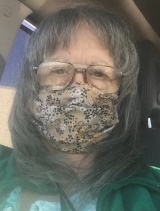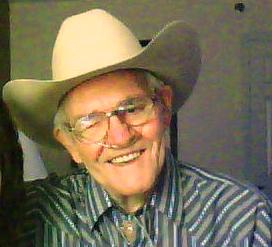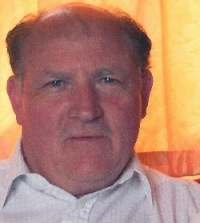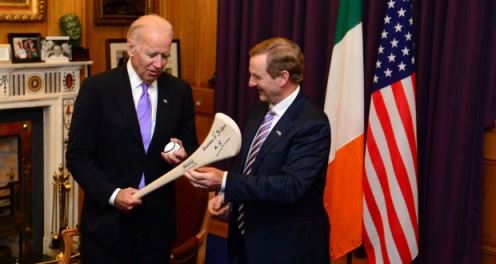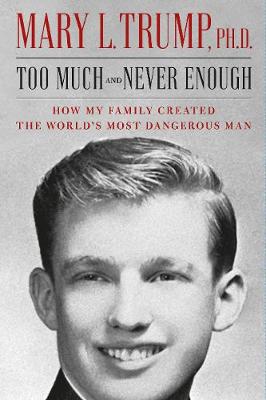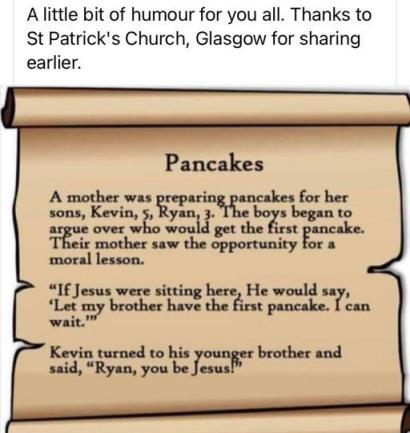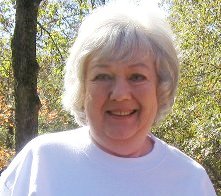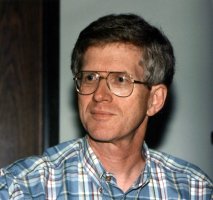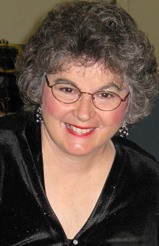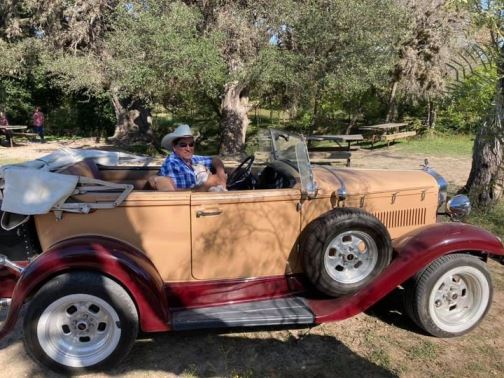
By
Melinda Cohenour
This first
appearance in this magazine by our Armchair Genealogy columnist Melinda
Cohenour is being used here for her February column as she is not able
to continue the Cohenour genealogy this issue.
The following story is from the editor's
geneaology records, researced and compiled by her sister, Melinda Ellen
(Carroll) Cohenour.
The Fate of Abraham Josselyn aboard Ye Good Fame of
New Yorke
Added by mecohenour
on 15 May 2009
Abraham
Josselyn is noted by many historians as having lost his life aboard the ship Ye
Good Fame of New Yorke sometime between the making of his Will on 16th
March 1669 and the proving of that Will on or about 17th April 1670. His
Will, as recorded in the records of the Surrogate's Office of New York, indicate
he was "very sicke & weak" at the time of the making of the Will.
It is doubtful he survived long after rendering and signing it.
Long
fascinated by the rather romantic place of dying ("seventeen miles off the
coast of Virginia, aboard the ship Ye Good Fame of New Yorke"), my
research has disproven many of my favorite theories as to the cause of his
death: 1) that the ship was capsized by a storm; 2) that the ship sank
after colliding with an obstacle at sea; or 3) that the ship was fired upon
by Dutch sailors and Abraham Josselyn lost his life as a result of battle.
Thus, my research into the history of the ship itself.
The
history of Ye Good Fame is enmeshed with the history of the State of
New York
. New Netherland, as
New York
was called by the Dutch in 1664, was taken by the Englishman mariner, Colonel
Richard Nicolls. It was the opinion of the Crown of England that the Dutch
were "encroaching" upon the land which belonged, by right, to
England
. Although Col. Nicolls' personal account of the retaking of New Amsterdam
(
New Netherland
) was lost at sea, other versions have survived. One of those documents
was entitled Original Papers (penned by the Duke of York who later became
King James II) and provides the following history of this event:
"The
Duke of York, borrowing of the king two ships of war, sent Sir Richard Nicholas,
groom of the bed-chamber and an old officer, with three hundred men to take
possession of the country; which the Dutch gave up on composition, without being
blockaded..., Colonel Nicholas remained there in peaceable possession of the
country; and then called it New York and the Fort of River Albany. All
this happened before the breaking of the first Dutch war."
[Autobiographical notes of James II]
Colonel
Nicolls was named first Governor of New York for his troubles. The son of
a lawyer, his mother was a daughter of Sir George Bruce. He was
"splendidly educated" and spoke Dutch and French as well as he did
English. He served the Crown well in settling disputes among the various
nationalities, including the Dutch and English settlers; and quieted unrest
among the Native Indian tribes; established the first laws and organized the
colony so that ongoing discussion could be had to settle new disputes. It
is said of Nicolls:
"Nicolls was just then
reconstructing the government of his province along English lines; and, laboring
more conscientiously, more intelligently, and with more patience, cheerfulness,
tact, and good-will than could have been expected of a soldier charged with a
civilian's tasks, an Englishman set to govern Dutchmen, a courtier not yet forty
years of age exiled from Whitehall to the edge of the world, he had almost
finished the work before he heard that war had been declared in Europe."
Although
he served the colony and the Crown well, he became tired and frustrated at the
entanglement of rules that drained not only his mental and physical energies,
but his pocketbook as well. One constant complaint: the little
colony needed ships to maintain commerce among other colonies in order to
sustain itself. The Crown, not wishing to provide too much freedom among
these independent and tough-minded colonists, resisted. Those ships which
did sail between the colonies were, ultimately, forced to sail to
England
with their cargo, permit inspection, pay the fees and taxes levied, and only
then deliver their goods to the intended colonial port.
New York
merchants, eager to find markets for their goods, determined to build their own
ship(s) to this end. The first ship, the King Charles, was
followed shortly by a ship whose name was not noted and is lost to history.
A bit of history concerning the King Charles helps to understand the plight of those
merchants:
Jacob Janse Schermerhooren was
commissary to the General Privileged West India Company, and was also
one of a court of three commissaries (magistrates) at Beverwycke and
Fort
Orange
(
Albany
), in 1652, 1654, 1656, 1657, 1664, 1666, 1674, and 1675." The records of
this court also show that in 1654 he visited
Amsterdam
, where his father, Jan Schermerhooren, was then living.' He again visited his
native land in 1668, and there loaded the ship "King Charles" with
goods for the Colony. The ship was prohibited from sailing to New York, and on
December 11, 1668, Schermerhooren petitioned King Charles II for his
permission to depart with his ship from the Trexel, " where it hath lain
many days ready to sail, and now lies there at great hazard on account of the
season of the year." The permission was subsequently granted by the orders
of the King, through the Duke of York, Lord High Admiral of
England
. [Genealogy of a part of the third branch
of the Schermerhorn family in the United States, Author, Louis Younglove
Schermerhorn, 1840.]
The
colonists also resisted a plan by the King to permit two Scotch ships to sail
into their harbors, fish in their seas and carry cargo bound for their markets.
Ultimately,
Nicolls was permitted to step down from the position of Governor. His
successor was one, the "Right Honorable Colonel" Francis Lovelace.
Lovelace was about 38 when he accepted this post. It was believed he was,
like Nicolls, a single man but history has shown he may have married
"beneath his place" and been forced to leave his wife in
England
. He brought with him two of his brothers. It is recorded that,
"although in every way a weaker man than Nicolls", Lovelace attempted
to maintain the double thrust of Nicolls' success: "mingled
conciliation and firm justice." Lovelace is reported to have served
his post well, all in all, as he was both an amiable and intelligent leader.
Appointed
in 1668, he
"interested himself in better
ferriage, roads and transportation by land and water, and the regulation of
trade and extension of commerce. He instituted the first merchant's
exchange and the first haven master of the port. He promoted shipbuilding
and himself owned a fine ship, The Good Fame of New York. He
extended settlements and laid out new villages and townships, and by purchase
for the Duke, freed
Staten Island
from Indian control."
Lovelace continued
the work begun by Nicolls in fortifying the settlement by strengthening of the
fortifications themselves and by raising foot companies and troops of horses
which were constantly in training. His last effort on behalf of his
growing settlement was to establish a continuous post road between
New York
and
Boston
, thus instituting the first postal service as well as setting forth the means
for management of the system: a postmaster with a small amount of monies
raised to pay his salary.
Unfortunately,
this last effort on behalf of the young settlement cost Lovelace the respect of
the Crown, in fact earning him a trip to the
Tower
of
London
and dishonor. For, during Lovelace's trip to
Boston
in 1673 to cement the final arrangements for that fledgling postal service, the
Dutch moved into
New York
, overtaking the settlement in his absence. He was granted full blame.
He contracted dropsy after lengthy incarceration in the damp and drafty
Tower
of
London
and died two years later in full disgrace, penniless and wrongfully blamed.
It is
Lovelace's efforts to provide the merchants of infant
New York
with a means to conduct commerce that we will now explore. He entered
into a joint venture with sixteen merchants to have Ye Good Fame built,
at a very dear cost for that time and place. One Samuel Maverick had been
enticed to settle there by Nicolls who induced the Duke to gift Maverick
with a house confiscated as part of the property of the West India Company.
It was on 'the broadway' as the former Heere Weg was then called. After
Nicolls' return to
England
, Maverick wrote to him of newsworthy events, including the building of the Good Fame.
"The governor with some partners
is building a ship of 120 ton by Thomas Hall's house...another of 60 or 70 ton
is building at
Gravesend
."
A few
months later, Maverick reported to Nicolls that the governor's ship had been
recently launched and named The Good Fame of New York and that it was a
"very strong and handsome vessel, but costly." Used initially in
continuance of the West India trade routes, the ship was sent to
Virginia
and then to
England
. (*)
It may
be assumed that it was during this trip to
Virginia
that Abraham Josselyn met his Maker aboard Ye Good Fame of New Yorke.
The timing would be right and it is documented that the Good Fame was taken by
Dutch privateers in 1673 after this voyage:
The last of the Anglo-Dutch wars put a
temporary stop to Lovelace’s involvement in foreign trade, when Dutch
privateers took the Good Fame at either Trexel or
Sandy Hook
in 1673. That same year Steenwyck lost his ship James; Thomas Delaval
lost the Margaret, and Frederick Philipse lost the
Frederick
. But these and other losses, including the surrender of the city to the Dutch
for one year, only underscored how vital the Dutch trade could be for supplying
the city. Indeed, many of the city’s Dutch paused long enough with English
residents to consider which mother country was, as Capt. John Manning put it,
the greater “enemy in our Bowells.“ [The Hollander Interest and Ideas
about Free Trade in Colonial
New York
: Persistent Influences of the Dutch, 1664-1764 by Cathy Matson,
History Department,
University
of
Delaware
.]
According
to “THE JOCELYN-JOSLIN-JOSLYN-JOSSELYN FAMILY”, Compiled by
Edith S. Wessler, Produced by Charles E. Tuttle Company of
Rutland
Vermont
and
Tokyo
,
Japan
, copyright in
Japan
, 1961. Library of congress Catalog Card No. 61-11559. First edition 1962.
Page #81, family #35 reads as follows:
"Abraham
was largely interested in commerce, and probably owned several ships sailing
between
Plymouth
and
England
. He was a proprietor of Black Point (Scarborough)
Maine
; a member of the Grand Jury there in 1659, the year he sold his property and
went to
Lancaster
,
Mass.
, where his father lived.
“Abraham, Scarborough, with his
wife, sold 200 acres of land 27 October 1659; deed witnessed by Henry and
Margaret Joselyn; removed to
Boston
with wife Beatrice; sold land at
Scarborough
which had been in his possession for “divers years past.” This land was
sold to Mr. Scottow, 8 June 1660. It included “Josselyn’s great hill, later
known as Scottoway’s Hill.”
By 1663, Abraham had rejoined the
rest of the family in
Lancaster
, where he maintained his residence until his death. He was a man of enterprise
and some wealth, and evidently a daring and hearty mariner, considering the size
of the ships of that day. Sloops and ketches measured more than fifty or sixty
feet in length, and ranged in size from forty to sixty tons."
It is
not known whether Abraham Josselyn shared in the ownership of Ye Good Fame,
but it is doubtful since his Will makes no mention of it. However, one
other assumption may be made concerning Abraham's position aboard the Good Fame. Considering the level of education which may
be assumed by Abraham's delayed trip to the
New World
in order for him to complete his education, coupled with the
social position he and his father Thomas Josselyn (the Immigrant) enjoyed, it
may be assumed he was no common mariner. Those facts and other common
sense suppositions indicate that Abraham Josselyn was probably the Captain
of Ye Good Fame of New York. This assumption is bolstered by the
following notation found in a study of the Joslin, Joceline, Josselyn, Joslyn
family which, in a footnote, includes the following:
14
"My Great Grand-Father Capt Abraham Josselyn was Born in
England
in
Essex
. . . Uncle Joseph took this acount from his Cousin Rebecca Clark Octr. 18th
1759." Diary of Thomas Josselyn, 1743–1775, Mss C3489, NEHGS.
The
cause of Abraham's death may never now be determined. From the section of
the Will where he indicates he is both "very sicke & weak,"
indications are that he had contracted a fatal illness. It is known the
New York
colony was wracked by epidemics of unidentified fevers in both 1668 and 1669.
Gov. Lovelace proclaimed "days of humiliation" on September 8 and 22,
1668, to atone for the sins he believed had caused the epidemic to be visited
upon the populace. In a letter from Samuel Maverick to former Governor
Nicolls in October of 1669, he noted, "The flux, agues, and fevers, have
much rained, both in cittie and country, & many dead, but not yett soe
many as last yeare." Some historians believe the 1668 epidemic may
have been caused by an outbreak of yellow fever. Abraham Josselyn was 54
years of age when he died aboard his ship, Ye Good Fame of New Yorke.
(*) Based upon calculations by Francis Turner which are
contained in a separate story here, Francis Lovelace and his sixteen merchant
partners paid a dear price for this "strong and handsome vessel."
One Egydius Luyke, a Dutch merchant who participated in the joint venture
documented his indebtedness to Lovelace with a debt instrument which
has been preserved among the historic papers of the State of
New York
. The debt instrument, although the manuscript is torn in a number of
places, is in surprisingly good shape such that Luyke's one-sixteenth share
of the cost may be read. Assuming the tears in the manuscript are minute (which
appears to be the case, given the balance of the text), Luyke's 1/16th share
cost him "Six thousand, three hundred and nineteen Guild (manuscript
torn here) Stiv's Seaw't or the Equivalent Value thereof" (manuscript torn
here). In 1632, one Guilder would be equivalent to $36 US Dollars.
That would make Luyke's portion equivalent to $227,484 and the full cost of the
ship, assuming equal portions for each of the sixteen, would be equivalent to
$3,639,744 in today's currency. [MEC note.]
Copyright 16th May 2009, Melinda E. Cohenour
SOURCES:
1) History of the City of
New York
in the Seventeenth Century, Vol II; by Schuyler Van Rensselaer; published
by The Macmillan Company 1909;
2) History of the city of
New York
; it origin, rise, and progress by Martha Joanna Lamb, Burton Harrison,
published by A. S. Barnes, 1896
3) The Hollander Interest and Ideas about Free Trade
in Colonial
New York
: Persistent Influences of the Dutch, 1664-1764 by Cathy Matson,
History Department,
University
of
Delaware
.
4) Original Papers,
Duke of York, later King James II, autobiographical notes;
5) The Genealogical Advertiser: A Quarterly
Magazine of Family History, edited by Lucy Hall Greenlaw; published by Lucy H.
Greenlaw, 1901;
6) Wikipedia: Col. Francis Lovelace, with
Annotations;
7) State of
New York
, Historical Papers, Surrogate's Office, compiled.
8) “THE JOCELYN-JOSLIN-JOSLYN-JOSSELYN FAMILY”,
Compiled by Edith S. Wessler, Produced by Charles E. Tuttle Company of Rutland
Vermont and Tokyo, Japan, copyright in Japan, 1961. Library of congress Catalog
Card No. 61-11559. First edition 1962. Page #81, family #35.
9)
Money and exchange rates
in 1632 by Francis
Turner.
Click on author's byline for bio and list of other works published by Pencil Stubs Online.
